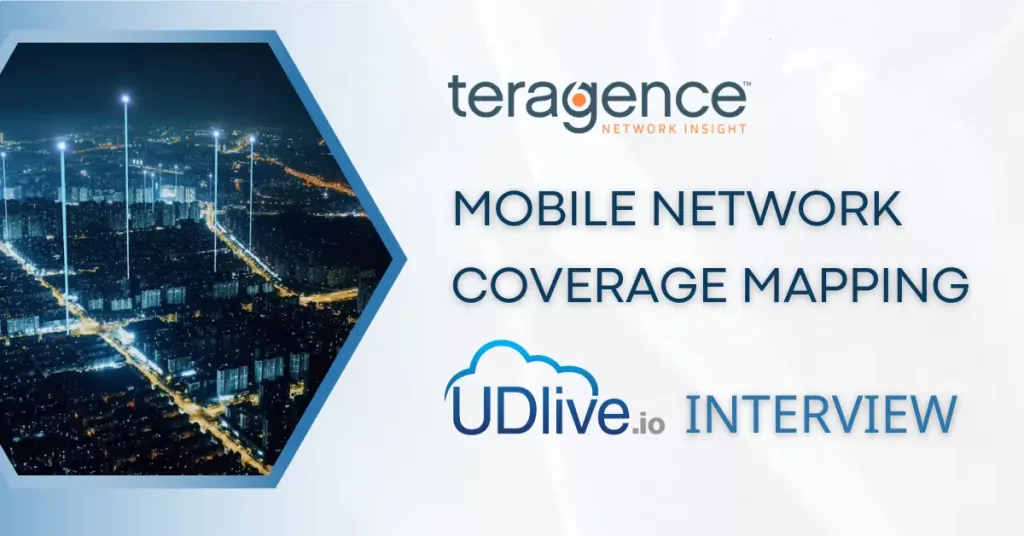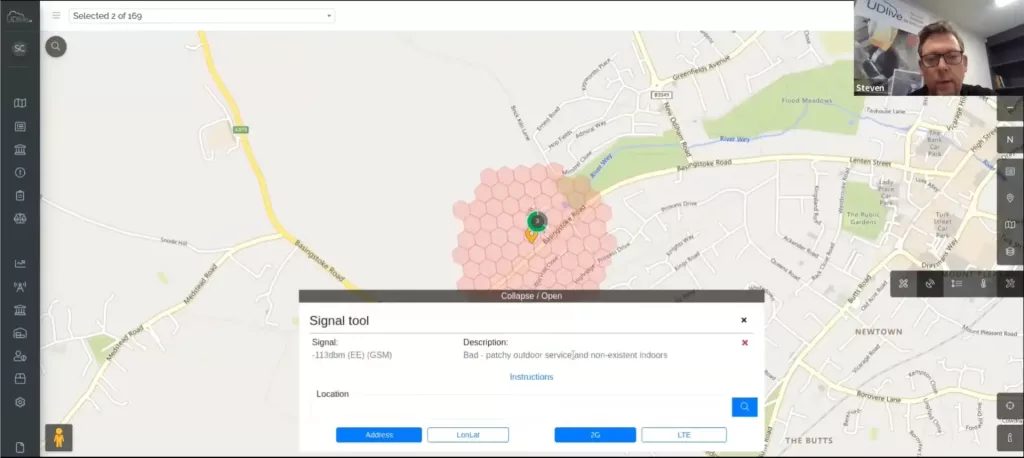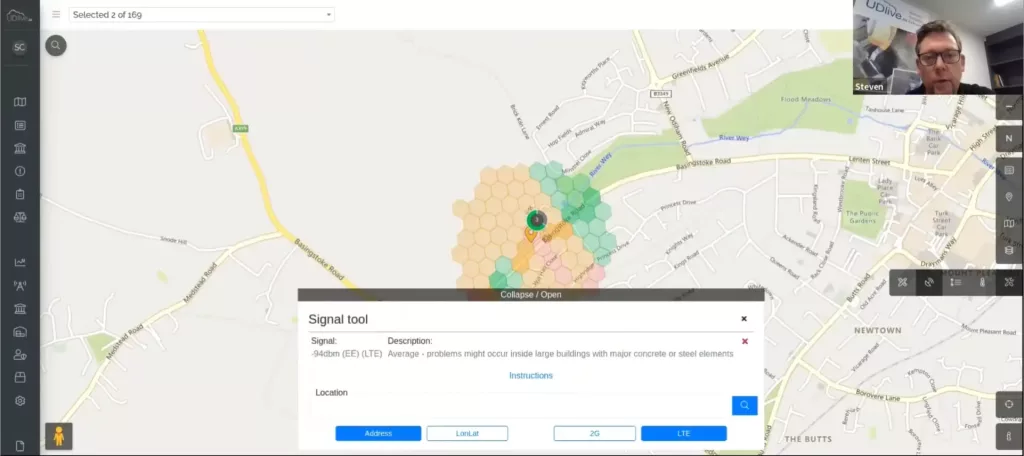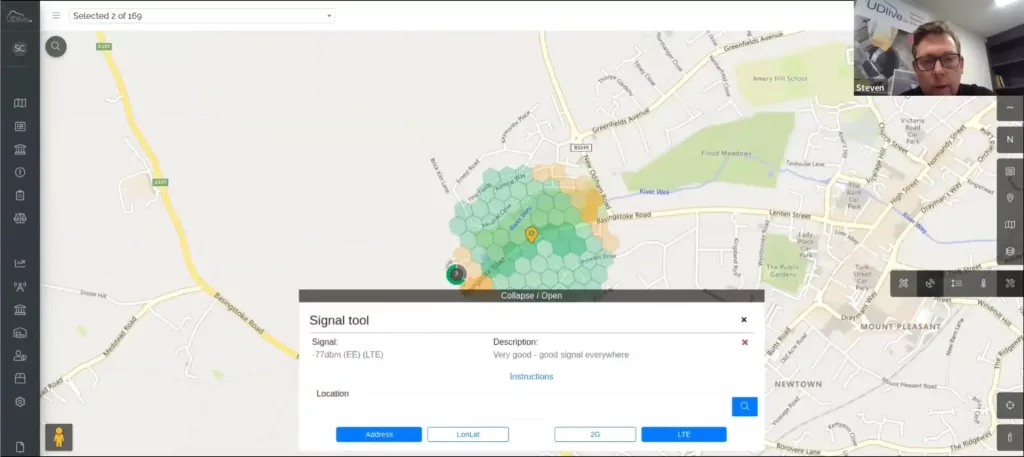Mobile Coverage Mapping Enhancing Sensors Deployment

Join Teragence’s CEO, Christian Rouffaert, as he interviews Steve Cooper, UDlive‘s customer success lead. They discuss how UDlive’s innovative use of accurate mobile coverage data ensures fast and precise sensor deployment in challenging environments like wastewater management and flood prevention.
This discussion examines the crucial role of mobile coverage mapping in making informed deployment decisions. This is a must-watch for anyone interested in the practical applications of mobile signal checker tools and how they contribute to the efficiency and success of large-scale sensor deployment projects. Discover how UDlive achieves significant savings and operational efficiencies through their strategic approach, and get inspired by their innovative solutions.
We share below the original video interview and the transcript, grouped by thematic sections for ease of navigation and to enhance your understanding of the key points discussed:
- UDlive’s Unique Approach to Environmental Sensor Deployment
- Accurate Mobile Coverage Data To Deploy Sensors with Precision
- Teragence Mobile Coverage Mapping API Role In UDlive’s Web Portal
- UDlive’s Business and Commercial Benefits Achieving Deployment Efficiency
- UDlive’s Expectations From Teragence Mobile Coverage Mapping Solutions
UDlive’s Unique Approach to Environmental Sensor Deployment
Christian Rouffaert: [00:00:00] Good afternoon everybody, and welcome to this first series of our video podcast from Teragence. Today I’m speaking with Steve Cooper, customer success lead at UDlive. Hi, Steve.
Steve Cooper: [00:00:11] Hi, Christian.
Christian Rouffaert: [00:00:12] Steve, you work for UDlive. Can you explain what your company does?
Steve Cooper: [00:00:17] Sure. At UDlive, we develop environmental sensors and battery powered telemetry data loggers. The key focus for us is on fast and simple deployment. And we sell those into the wastewater industry and flood prevention activities, enabling digital transformations of their networks. And that kind of fits into two categories in the water network world: Environmental compliance, something like maybe monitoring CSOs, which you hear a lot about in the news, or operational efficiencies such as blockage detection and removal.
Christian Rouffaert: [00:00:52] Okay. You work for the water industry, which is not a new kid on the block. It’s been an industry that’s been around for a long time. It’s also an industry that’s a pioneer in the use of IoT devices, measuring devices, sensors, meters, that kind of stuff. So I assume there are quite a few companies in your space. What would you say are the UDlive differentiators and USP’s?
Steve Cooper: [00:01:14] The first USP that really differentiates us from our competitors is our radar technology, and that is for its cost point class leading in terms of features and accuracy. It’s very simple to install. It’s configured via our web app. A simple button on the device configures it for you. There’s no back end calibration required. As soon as you’ve installed it, you’re pretty much collecting data straight away. That’s probably the key USP there. The second part, I would say, is probably our customer engagement and the way that we build these close consultative relationships with our customers. We really try to listen to what is the problem the customer is trying to solve- what their real needs are. And our agile development approach means that we can keep with them and change and develop and give them the features they want in a timely fashion, in their often very aggressive timescales. And that , in turn, led us to really getting all the things lined up to work first time. So we developed this right first time approach, which has developed into our deployment planning service, which we’ll talk about in a minute.
Accurate Mobile Coverage Data To Deploy Sensors with Precision
Christian Rouffaert: [00:02:22] So you have a good kit, if I may paraphrase you, with an agile service wrapper and a focus on right first time. Right. What role does Teragence play in that value proposition?
Steve Cooper: [00:02:36] Teragence provides, as you well know, multi-operator and multi network cellular coverage information. And that is one of the key complexity vectors that we use in our deployment planning service. It is really important for us to determine whether a location is suitable for one of our devices to really understand that cellular network landscape. So we are using the Teragence Signal Checker API to access detailed CSQ data across different technologies and different operators, and give the customer visibility of that so they can use that to really understand where their devices may be more successful than others. And then in addition to that, we’ve made that into a desktop project review tool. We’ve developed a toolset enabling us to go away and take a full catchment or a full grouping of sites where and really understand the complexity of those sites ahead of time.
Christian Rouffaert: [00:03:35] Can you expand a little bit on that? You mentioned that review afterwards and the planning before. So how do those two relate?
Steve Cooper: [00:03:42] So typically a site will have some inherent complexity. And that could well be the geometry itself of the sewer, the channel dimensions and of course the cellular coverage. If we combine all of those data points, we can get a really good understanding of which sites are difficult to deal with and which sites are easier to deal with. And if we can get installers to go out and tackle the easy, less complicated sites first, we get a much higher success rate. The teams get much higher up the learning curve a lot quicker. And understanding the cellular landscape is really key to this, because we want to be putting the devices in areas where we’re pretty confident that the devices are going to work.
Teragence Mobile Coverage Mapping API Role In UDlive’s Web Portal
Christian Rouffaert: [00:04:22] That’s pretty cool to hear: when we designed our Signal Checker, we consciously followed an API strategy so that our data could be integrated into other systems and combined with other data sources to come to a holistic picture of, in your case, complexity or deployment complexity. So I’m really chuffed to hear that you guys are making good use of it. Could you show us what that looks like in reality?



Steve Cooper: [00:04:47] This is our web portal. If we zoom in a little bit, we can see we’ve got a couple of devices installed around our offices. Now, if I wanted to deploy some devices in this particular location, I might want to go and take a look at the cellular landscape first. So if I click on here , I can take a look and see what the 2G landscape looks like here. I can, after a few API calls to you, collect the relevant coverage data and represent that on the map. We can see here, according to description it’s bad, patchy outdoor service, nonexistent indoor. So this might not be such a good idea for 2G. So let’s look at LTE or 4G . And here we can see we’re here in our offices, it’s actually quite average in terms of signal. But if we were going to deploy this device and give it the best chance of working, we might look further up the road here. Because as we move further up the road, what we can see that the signal improves significantly. So here with a few clicks, I can make an assessment as to whereabout I might want to place my device.
Christian Rouffaert: [00:05:54] Okay, that’s pretty cool.
Steve Cooper: [00:05:56] This is obviously a single click on a single device, but we can systematically use our tool to do this over a larger region and provide a report on this such that one can get a good feel for where a lot of devices should be deployed.
UDlive’s Business and Commercial Benefits Achieving Deployment Efficiency
Christian Rouffaert: [00:06:12] Very nice. I’m always thrilled, not only to see our service being used, but I’m also always interested in very nice applications of mapping technology, and this is certainly one of them. But cool technology is one thing, business benefit is another. What would you say is the business and commercial benefit of this approach?
Steve Cooper: [00:06:32] Well, Let’s consider what the majority of our customers are trying to achieve, i.e. these are large telemetry deployment projects. They’re very expensive and very complex. Inevitably keeping them on budget is quite a challenge. Quite often equipment performance can be blamed , and the reality is that installations sometimes face unprecedented challenges right from the beginning. As we could see, there are areas where the mobile network coverage is not as good as in others. If we choose to put something in a compromised position from the start, then that’s not going to help. If we’ve got inexperienced installers struggling with these challenging situations, it means that they’re not really being effective very quickly. What we are trying to do here is hold their hands as they go through some of these processes and getting up to speed and some of these subtle nuances, and trying to help them get going along their project more effectively.
Christian Rouffaert: [00:07:28] So basically with your data, your deployments happen more smoothly, less errors. So that makes the project manager very happy. But what is the financial commercial benefit?
Steve Cooper: [00:07:40] Yeah, I mean the commercials are really quite simple when we think about it from a visit point of view. So with a normal visit, we hope to turn up and put the device in and leave. And that’s getting data from there on inwards and everyone’s happy. But we know that a number of sites do need to be returned to due to poor connectivity or complexity that wasn’t really understood. That wasn’t really understood. And we know from calculations and from experience that a revisit abort costs roughly 2.8 times a fresh install now. So obviously some of this will be budgeted for in the project. But not all of it. And we can see that from a number of visits that we see on a particular project. We can kind of correlate that to how much money a project may overrun. So where we’ve done this work, we can see that we can kind of reduce secondary interventions by around 18%. And this can lead to a gross saving of 20% and a net saving of 15%.
Christian Rouffaert: [00:08:46] Wow. Between 15 and 20% benefit on the deployment. Those are significant numbers. What’s been the market reaction on those results?
Steve Cooper: [00:08:57] We’ve certainly had some caution with those figures. I think it’s difficult to believe that one can gain that much of a benefit. But you know, we’ve been able to demonstrate this. We’ve performed projects with upfront reviews, and we’ve performed projects where we haven’t done a review and we’ve gone into it very ad hoc. And the results really just speak for themselves.
UDlive’s Expectations From Teragence Mobile Coverage Mapping Solutions
Christian Rouffaert: [00:09:22] That’s pretty impressive. And I’m very happy that we as Teragence can be part of that success story. We’re coming to the end of our video interview here. So a quick question. Why did you guys choose to work with us? That’s question number one. And then question number two is what else would you like to see from us. What can we do for you to be more helpful?
Steve Cooper: [00:09:50] A good question. I think we’ve built a pretty good relationship with you guys. We felt that when we first engaged you, your Signal Checker was an innovative and market leading solution. And you do exactly what you say on the tin. You solve the very complicated problem, i.e. mobile network coverage analysis, for us in a very easy way. The ability for us to grab that data and process it through a very streamlined API was really useful. And I think the way that we’ve moved forward collaborating in terms of providing you data back into the model to help ever refine that model from the real data that we’re able to collect from our devices has shown great improvements there. So I’d say those are probably the key things.
Christian Rouffaert: [00:10:37] Nice to hear. And it’s indeed important for us to keep on collecting data to improve the information that we bring back. So it is a virtual circle. And what would you like to see for us to do to improve or to evolve? What’s on your wishlist there?
Steve Cooper: [00:10:53] I think in terms of improving the efficiencies of the API, we could do with better response times for some of the analysis that we perform and give the customers a little bit of an improved experience on that, and maybe reduce some of the backlog and processing that we need to do to in order to maintain this.
Christian Rouffaert:: [00:11:19] All right. Improving performance is always a good thing. So we’ll definitely look into that. Steve, thank you very much for sharing your experience and sharing how you guys use it. This has been most helpful and illuminating for us and thank you for your time.
Steve Cooper: [00:11:34] You’re welcome. Christian, it’s good to talk.
Christian Rouffaert: [00:11:36] Cheers. Bye. Thanks.